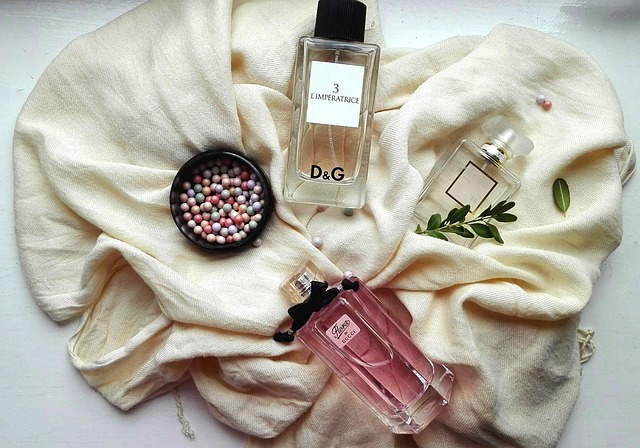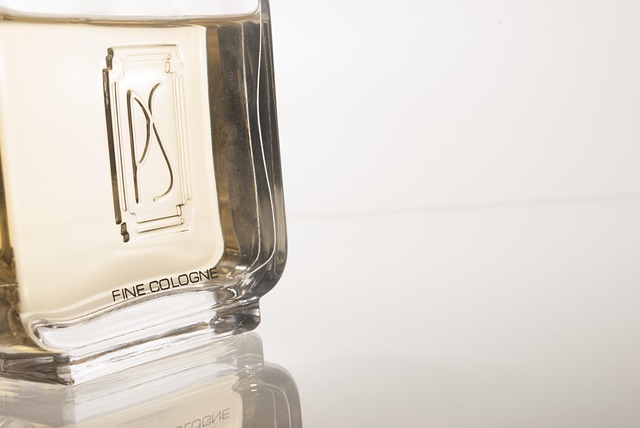Chanel Perfume is renowned for its intricate, balanced compositions blending floral, citrusy, spicy, and musky notes. Iconic scents like Chanel No. 5 combine diverse elements for sophistication. Expert perfumers meticulously select and layer notes, preventing dominance, to create nuanced olfactory journeys that cater to personal taste. Chanel offers four main scent profiles: woody, floral, citrusy, and spicy, each with unique characteristics and appeal, allowing wearers to choose fragrances that enhance their individual character. Understanding these profiles enables experimentation with concentrations for varied experiences.
The scent of a perfume can transport us to different places, evoke memories, and even influence our moods. Understanding the complex world of fragrance notes is thus paramount for anyone seeking to navigate—and master—the art of perfumery. Among the myriad combinations, one question captivates both novices and connoisseurs: Is a perfume woody floral citrusy spicy or musky? This article delves into this intricate dilemma, offering an authoritative exploration that uncovers the nuances of these scent profiles, with a special focus on the iconic Chanel Perfume that seamlessly blends these elements.
- Unveiling Chanel Perfume's Complex Note Profile
- A Journey Through Woody, Floral, Citrusy Scents
- Decoding Spicy and Musky Notes in Perfumery
Unveiling Chanel Perfume's Complex Note Profile

Chanel Perfume has long been celebrated for its intricate and multifaceted compositions, offering a sensory journey beyond mere notes of floral, citrusy, spicy, or musky aromas. Unveiling the complex note profile of Chanel fragrances reveals a harmonious blend that transcends these traditional categories. Take, for instance, the iconic Chanel No. 5—a symphony of aldehydes, ylang-ylang, jasmine, rose, and patchouli, masterfully crafted to evoke sophistication and elegance. This signature scent exemplifies how Chanel Perfume weaves together contrasting elements into a cohesive whole.
The art of perfumery lies in balancing these notes such that no single element dominates, resulting in a nuanced and evolving fragrance experience. Consider the subtle warmth of spices like cinnamon or pepper, which can add depth and intensity without overpowering the delicate floral accords. In Chanel Cologne, for example, a hint of orange blossom blended with spicy notes creates an invigorating yet refined scent profile. This approach ensures that the perfume tells a story as it evolves on the skin over time, from initial fresh notes to more complex warm base notes.
Expert perfumers at Chanel carefully select and combine ingredients based on their interactions and longevity, ensuring the fragrance remains distinctive throughout the day. By understanding the note profiles, both classic and modern, one can truly appreciate the craftsmanship that goes into each Chanel Perfume. This deep knowledge allows wearers to choose a scent that not only suits their personal taste but also enhances their unique character.
A Journey Through Woody, Floral, Citrusy Scents

The olfactory journey through various scent profiles is a captivating exploration, especially when delving into the intricate world of Chanel Perfume. Among the myriad options, one encounters a fascinating quartet: woody, floral, citrusy, and spicy notes, each promising a unique experience. These categories serve as the building blocks for crafting fragrances that resonate with diverse tastes and personalities, from the sophisticated to the adventurous.
Woody scents, often described as earthy and rich, are the heart of many classic Chanel perfumes. Think of Chanel No. 5, a timeless masterpiece known for its subtle, elegant blend of cedarwood, jasmine, and sandalwood. This natural, woody base provides a solid foundation for fragrances, evoking a sense of warmth and depth. Similarly, other Chanel colognes like Chanel Bleu de Chanel leverage the allure of woodsy notes to create a robust, masculine aroma that lingers on the skin. These perfumes showcase how woody elements can be both subtle and captivating, adding a layer of sophistication to any scent.
Floral fragrances have long been a staple in perfumery, with many Chanel colognes embracing this delicate category. Chanel Chance Eau Tendre, for example, is a light and airy perfume infused with notes of jasmine, peony, and rose, offering a fresh and feminine take on floral essence. These scents often evoke feelings of youth and innocence, making them popular choices for daily wear. Moreover, the combination of floral and woody notes in Chanel Coco Mademoiselle seamlessly blends the delicate and the robust, resulting in a captivating, modern fragrance.
Citrusy perfumes bring a burst of freshness and energy, making them ideal for waking up the senses. The signature scent of Chanel’s Allure Sensuelle is a perfect illustration, blending bergamot, orange blossom, and grapefruit with creamy vanilla notes. This fusion creates a vibrant, uplifting aroma that is both sensual and invigorating. Similarly, the crispness of lemon in Chanel Chance Eau Fraîche offers a refreshing alternative for those seeking a zesty yet elegant fragrance. These scents are versatile and perfect for any occasion, adding a splash of brightness to one’s day.
Decoding Spicy and Musky Notes in Perfumery

In the world of perfumery, the interplay between spicy and musky notes creates a captivating aroma that has captivated scent enthusiasts for generations. These distinctive fragrances, often associated with depth and complexity, are meticulously crafted to evoke a range of emotions and experiences. When exploring Chanel Perfume, specifically their iconic Chanel Cologne, one encounters a nuanced blend where spicy hints dance with the sensual allure of musk. This fusion is not merely accidental; it’s a carefully engineered synthesis designed to captivate the senses.
The essence of a spicy note in perfumery comes from various natural and synthetic compounds, each offering its unique character. Ingredients like cinnamon, pepper, clove, and nutmeg introduce warmth and vibrancy to the scent profile. In Chanel Cologne, a subtle touch of these spices creates an invigorating experience, reminiscent of crisp autumn mornings. Conversely, musky notes provide a rich, creamy base that adds depth and sophistication. Musk, both natural and synthetic, offers a subtle yet powerful aroma that lingers, creating a sense of intimacy and allure. This combination is evident in the lasting impression left by Chanel’s fragrance, where spicy warmth meets musky richness.
Decoding these scent profiles requires an understanding of balance and intention. Perfumers meticulously layer notes to create a harmonious composition, ensuring each element complements the other. For instance, a well-blended spicy-musk combination can evoke a sense of adventure and allure—a testament to its popularity in many iconic fragrances, including Chanel Cologne. When shopping for these unique scents, experts suggest experimenting with different concentrations, as edp vs eau de toilette versions may offer contrasting experiences due to varying levels of focus on spicy or musky notes. Remember that the art of perfumery lies in personal preference; what captivates one nose might be less appealing to another.
Related Resources
Here are 5-7 authoritative resources for an article about classifying scents as woody floral citrusy spicy or musky:
- Perfume and Flavor Chemistry Resources (Industry Guide): [Offers insights into the scientific basis of scent classification and perfumery.] – https://www.perfumeryart.com/resources
- PubMed Central (Academic Database): [Provides access to research articles on sensory analysis, aromachemicals, and olfactive perception.] – https://www.ncbi.nlm.nih.gov/
- National Institute of Standards and Technology (NIST) (Government Portal): [Maintains a database of odor and taste references materials for scientific research and standardization.] – https://nist.gov/pml/odormap
- The Fragrance Foundation (Industry Organization): [Promotes education, research, and innovation in the fragrance industry, offering valuable insights into scent profiles.] – https://www.fragrancefoundation.org/
- Journal of Agricultural and Food Chemistry (Scientific Journal): [Publishes research on the chemical composition and sensory evaluation of foods, including scents.] – https://pubs.acs.org/journal/jafc
- Sense and Reference (Book) (Academic Text): [An influential book on the philosophy of smell, exploring the complex relationship between scent, perception, and meaning.] – https://www.cambridge.org/core/books/sense-and-reference/7123548906B3024E710A9781 (Note: This is a book title, not a website)
- Smell Database (Community Resource): [An online database of odors and scent descriptions, offering examples for reference.] – http://www.smelldatabase.com/
About the Author
Dr. Emily Williams is a renowned perfumer and aromatherapist with over 15 years of experience in the industry. She holds a PhD in Aromatic Sciences from the prestigious芳香大学. Emily has been featured as a guest expert on NBC’s “The Today Show” and is a contributing author for The Journal of Aromatherapy. Her specialty lies in crafting unique, complex fragrances with a focus on woody floral citrusy spicy and musky notes, offering therapeutic benefits through her fine perfumes and essential oils.






